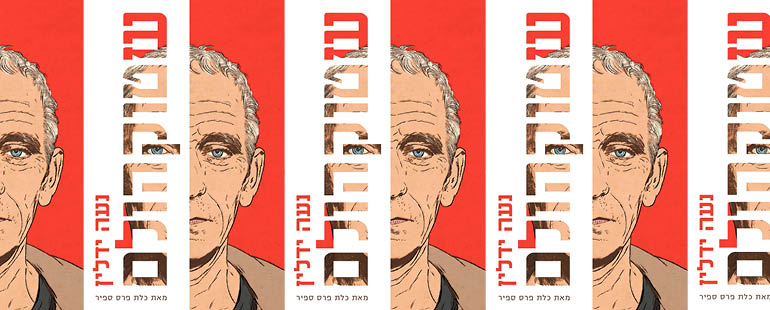Stockholm’s Exploration of Mortality

Stockholm (2016), by Israeli novelist Noa Yedlin, is told from the perspectives of four best friends around the age of seventy. The fifth friend, Avishay, cannot chime in, because very early on in the novel he is found dead in his bed.
An economics professor of some renown, Avishay (who most likely had a heart attack in his sleep, or so the friends determine), is considered a possible candidate for the Nobel Prize in economics. Since the prize is only given to people known to be alive at the time of the decision, and since Avishay was single and a private man, his four friends decide that they can keep his death a secret for a week until the prize announcements are made. They each have their own motive for wanting Avishay to win, even posthumously: For Yehuda, it is the hope that the cover of his upcoming book will read “With an introduction by Nobel Prize laureate.” For Amos, also an economist, it is to prove that he is a supportive, non-envious friend. For Zohara, Avishay’s casual lover, it is part of a scheme to prove in retrospect that the two of them were in a domestic partnership and that she deserves to inherit the prize money. For Nilly, it appears to be merely a thrill, an adventurous way to prove her value and stabilize her role in the quadruplet.
What follows is a cross between deep soul searching and a comedy of errors. The four friends must overcome the physical and technological barriers posed by their age as they hide the body, move it to a second location, attempt to answer text messages without context, reveal what they believe to be Avishay’s future child, and make up stories and lies—some more convincing than others—to share with their partners and loved ones. As the days go by and the danger of getting caught grows more palpable, they discuss and debate the risks involved for each of them, what they have to gain, whether Avishay would have cared enough about the Nobel in his life to do something so unseemly, and what meaning such an honor even holds for a cadaver.
As the novel switches between points of view, the intricacies of the protagonists’ decades-long friendship are revealed: the inner circles, the debts of gratitude, the unresolvable tensions, the inconsolable insults. These social dynamics inform and are informed by each character’s personal history, big life events, and the scars they carry with them: Yehuda became rich at a young age after inventing and patenting a household appliance and has spent the intervening years attempting to prove to himself and the world that he is more than a one-trick pony. Nilly came out of a long marriage and is finding happiness in a new relationship, but the question of how her weight affects her romantic prospects and people’s perceptions of her continues to hang over her head. Amos has always kept his head down and his nose to the grindstone, and feels confused and hurt when his wife decides to go to law school with the intention of becoming a judge at retirement age. Zohara is at a risk of losing her career over a professional faux pas, and is coming to terms with the reality that she may have missed her chance at becoming financially independent and finding long-lasting love.
Together, the four must deal with the realities of aging. All on the verge of turning seventy, they agree that their age (along with their middle class status, their light skin, and their respectable lines of work) make them unlikely suspects if their scheme were to be revealed. Their plot is a way to examine what they are capable of and willing to do at an age when they are expected to get comfortable and grow obsolete. But what they don’t discuss is how hiding a dead body is a way for them all to avoid the real matter at hand: one of their best friends is dead, and one day they will be too.
The quartet hardly grieves at all, treating Avishay’s dead body as a prop to be dealt with rather than a person they have loved. But loss and fear pop up in unexpected places anyway, insuppressible and inescapable, causing them to test their relationships, end their marriages, change their lives, and come to terms with the parts of themselves they realize they won’t be changing after all. No matter how we try to hide mortality—or hide from it—the temporary nature of all that we have finds ways of invading our consciousness, like a corpse that grows putrid as the days go by, forcing us to acknowledge and deal with its presence.
At the end of the book, Yehuda, Amos, Zohara, and Nilly finally bury their friend. Once he is truly gone, they are left to pick up the pieces—still together, but forever altered by a loss they once attempted to talk themselves into ignoring.


